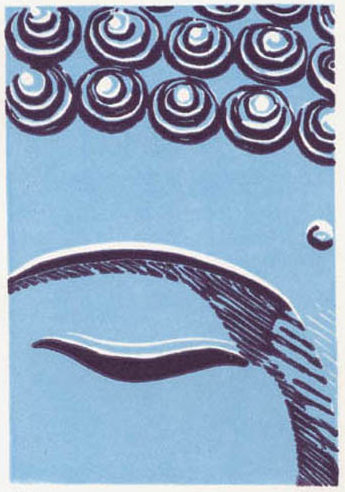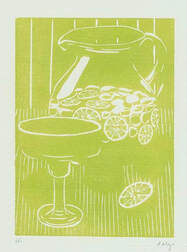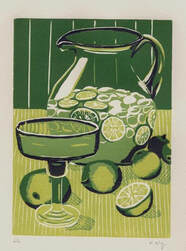About Linocut
|
Linocut is a relief technique popularized by Matisse and Picasso in the 20th Century. In this technique, a thin block of linoleum is mounted on wood. The artist then uses a sharp instrument to cut away the linoleum. In contrast to the intaglio techniques, where the recessed areas are inked, only the higher areas of linoleum are inked and printed, not the areas that have been cut away. A piece of paper is placed on top and the print is obtained either by rubbing the back of the paper or by placing the block and paper in a press. For every successive print the linoleum must be re-inked.
Picasso first introduced reduction linocut in 1959. It is the method by which a multicolor print is pulled from a single block. The linoleum is inked up with the lightest color and the first printing is made. The areas that are to stay that color are then cut away so that no further printing will take place in those areas and the linocut is inked up with the second color. Generally this is opaque and overlays the first color, but if a blue is laid over a yellow (for example) the blue will take on a greenish tint. Alternatively if a greater degree of color mixing is desired a transparent medium can be mixed with the ink. This method does not allow much margin for error. The edition length must be decided upon after the first printing because after the first cut for the second color has been made, there's no turning back. Neither is there the option to experiment with color combinations between the layers for the same reason. If an artist decides that they got the first color wrong when they try to lay down the fourth, it would be too late to change it. It would become more a case of adjusting the later colors to work with the earlier ones. The printing life of a linocut is relatively short, edition lengths anywhere between fifteen and fifty being pretty average. For an illustration of the makings of a linocut print, see Margarita Recipe or Making of Maya. |
Margarita Recipe
The making of Elena's Blue Margaritas linocut print
© 2025 Viola Ng









